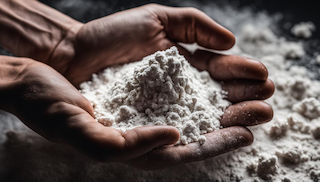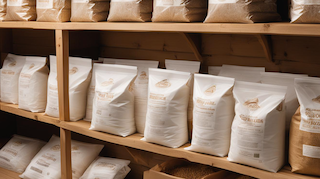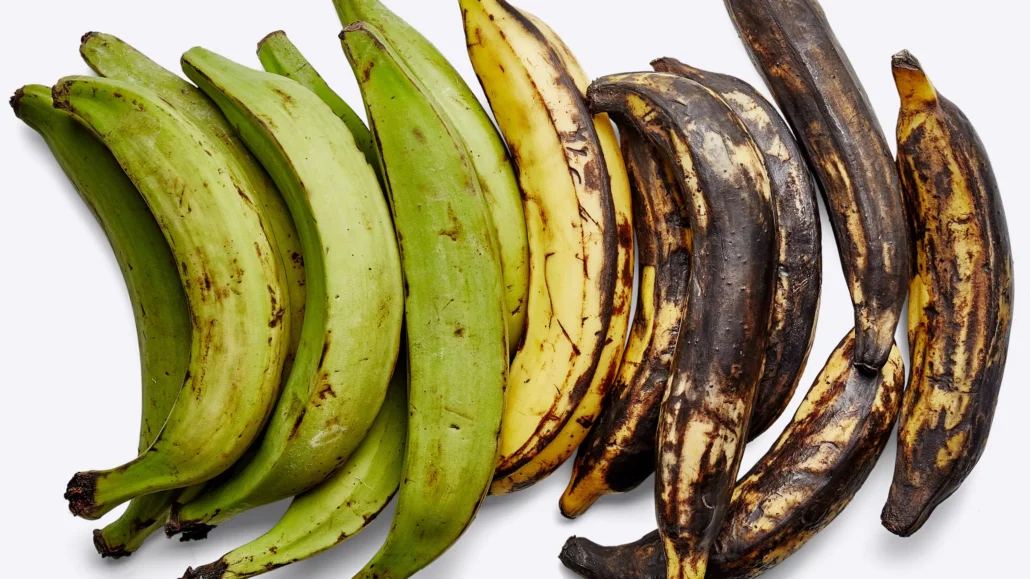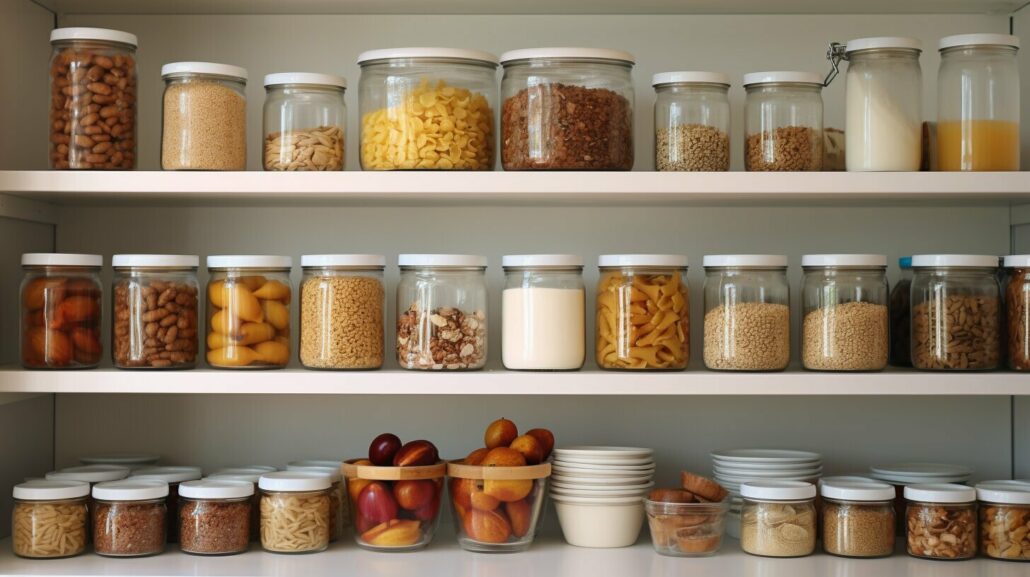Flour is an essential staple in households across the world, making proper storage a high priority. Many people wonder, Can You Store Flour In Mylar Bags? The short answer is: yes! Mylar bags have gained popularity as an effective solution for food storage, particularly for preserving flour freshness over an extended period. The combination of Mylar bags and oxygen absorbers has proven successful in keeping flour fresh for up to 10-15 years – a significant advantage in emergency situations or food shortages.
While there are numerous storage options available, Mylar bags’ light-blocking and moisture-resistant properties offer unmatched protection to keep flour at its best. In this article, we discuss the benefits of storing flour in Mylar bags, how they compare to other storage methods, and provide essential tips on maximizing freshness through proper sealing and storage techniques.
Key Takeaways
- Mylar bags are a highly effective solution for preserving flour freshness and extending its shelf life.
- Using oxygen absorbers in Mylar bags can enhance their efficiency, eliminating oxygen and protecting the flour from insects and spoilage.
- Quality matters: Choosing high-quality, durable Mylar bags is vital for successful long-term flour storage.
- Mylar bags excel in comparison to other storage methods such as vacuum sealing, containers, and food-grade buckets in terms of longevity and reliability.
- Proper sealing and storage of Mylar bags are essential to maintaining flour’s freshness and usability over the years.
Understanding the Importance of Proper Flour Storage
Proper storage of flour is crucial for maintaining its quality and freshness. The longevity of flour depends on factors such as light, oxygen, moisture, and pests as well as its form, with refined white flour lasting longer than whole-wheat varieties. By storing flour correctly, you can prevent spoilage and maintain its flavor, making it an essential practice for casual bakers and those planning for long-term flour storage.
Proper flour storage safeguards against spoilage and maintains its flavor, making it vital for both culinary enthusiasts and long-term storage plans.
- Flour’s shelf life can range from a few months to over a decade, depending on the storage method.
- Light, oxygen, moisture, and pests are detrimental to flour’s freshness and quality.
- Refined white flour lasts longer than whole-wheat varieties.
| Type of Flour | Shelf Life in Proper Storage |
|---|---|
| White, All-Purpose Flour | Up to 2 years |
| Whole-Wheat Flour | 3-6 months |
| Almond Flour | 6-12 months |
| Coconut Flour | 1 year |
In addition to preserving flour freshness, proper storage of flour can also contribute to food safety and security. Mylar bags, for example, are particularly effective for long-term flour storage, capable of extending its shelf life up to 15 years. Whether you’re a casual baker seeking to maintain the flavor of your favorite recipes or focused on emergency food storage, understanding and implementing proper flour storage methods is essential.
The Science Behind Mylar Bags for Flour Preservation
What Makes Mylar an Effective Storage Material
Mylar bags have gained popularity in the realm of flour preservation thanks to their unique properties and effectiveness in maintaining the freshness of the stored flour. Made from a metal-like material, Mylar bags are impermeable to moisture and oxygen, creating an ideal environment for flour storage. Shielding the stored flour from light and moisture, these bags prevent two major factors that contribute to degradation and spoilage of flour quality.
Comparing Mylar Bags to Other Storage Options
When it comes to flour storage containers, Mylar bags have a clear advantage over other popular storage methods like vacuum sealing and food-grade buckets. The table below shows a flour storage comparison between Mylar bags, vacuum sealing, and food-grade buckets, highlighting the benefits of each method.
| Storage Method | Shelf Life Extension | Air Tightness | Insect Prevention |
|---|---|---|---|
| Mylar Bags with Oxygen Absorbers | 10+ Years | Excellent | Yes |
| Vacuum Sealing | 2-3 Years | Prone to Air Leakage | No |
| Food-Grade Buckets | 2-4 Years | Good, but not as reliable as Mylar Bags | Partial |
As the table illustrates, Mylar bags paired with oxygen absorbers outperform both vacuum sealing and buckets in terms of shelf-life extension and insect prevention, making them the top choice for long-term flour storage.
The Role of Oxygen Absorbers in Enhancing Mylar Bag Efficiency
One important aspect of Mylar bags’ storage capabilities is their use with oxygen absorbers. These little packets contain iron filings that absorb the oxygen present inside the Mylar bag, reducing the oxygen levels for food storage and preventing oxidation and spoilage. Not only do they ensure the freshness of the flour, but they also inhibit the growth or hatching of any insect eggs in the flour, further enhancing the effectiveness of Mylar bags.
In conclusion, Mylar bags offer the ideal solution for long-term flour storage and preservation, outperforming alternative storage methods such as vacuum sealing or food-grade buckets. By protecting the stored flour from light, moisture, and oxygen, coupled with the use of oxygen absorbers, Mylar bags not only extend the shelf life of flour but also help maintain its freshness and quality.
Step-by-Step Guide to Storing Flour in Mylar Bags
When it comes to storing flour in Mylar bags, ensuring the quality and durability of the bags, using oxygen absorbers, and sealing the bags correctly are all crucial factors that contribute to the longevity and freshness of the flour. I have outlined a simple step-by-step guide to help you store your flour efficiently in Mylar bags:
- Select high-quality Mylar bags: First and foremost, make sure to choose sturdy and thick Mylar bags that are specifically designed for long-term food storage. Look for reliable brands known for their quality, such as Wallaby Mylar bags.
- Measure the flour: Calculate the amount of flour you want to store in each Mylar bag. Taking into consideration the size of your bags and the space you have available for storage will help you determine how much flour each bag should hold.
- Fill the bags with flour: Carefully pour the measured flour into the Mylar bags. Make sure not to overfill the bags to avoid issues with sealing and potential punctures from excess pressure.
- Add oxygen absorbers: Before sealing the Mylar bags, introduce oxygen absorbers into each bag. Oxygen absorbers play a vital role in eliminating oxygen and preventing oxidation to maintain the quality and freshness of stored flour.
- Seal the Mylar bags: After adding the oxygen absorbers, remove as much air as possible from the bags by gently pressing on them. Use a hot iron or a sealing device to create a secure and airtight seal across the top of the bags.
When storing flour in Mylar bags, it is essential to keep them in a cool, dark, and dry environment to ensure optimal results. By following this step-by-step guide, you can store flour efficiently and effectively for an extended period, up to 10-15 years.
Long-Term Flour Storage: How Mylar Bags Keep Flour Fresh
For long-term storage, Mylar bags are the best option for keeping flour fresh because they effectively shield it against the detrimental factors that cause spoilage such as light and oxygen. Flour stored in Mylar bags, when combined with oxygen absorbers, can have a shelf life of 10-15 years. This makes Mylar bags an ideal choice for individuals concerned with food security and who want to avoid the inconvenience of frequent flour purchases.
These bags have several advantages over other storage methods, such as vacuum sealing or airtight containers. First, Mylar bags are specifically designed for food storage, ensuring that your flour remains uncontaminated and fresh for extended periods. Second, their metallic component effectively blocks out light, preventing the loss of essential nutrients in flour. Lastly, their durability prevents punctures, providing additional protection against environmental factors that can lead to spoilage.
With Mylar bags, it is possible to store flour for up to 15 years, ensuring that your flour remains fresh, high-quality, and safe for consumption. This makes Mylar bags superior to alternative storage methods.
- Dark and Cool Storage: Store Mylar bags in a dark, cool, and dry environment to avoid exposure to light, heat, and humidity, further contributing to the longevity of your flour.
- Size and Quantity Matters: When planning for long-term flour storage, consider the size and quantity of Mylar bags needed. Smaller bags may work best for everyday use or rotating your flour stock, while larger, more robust bags may be most suitable for emergency backup provisions.
- Labeling and Organizing: Label your Mylar bags to keep track of the flour type, packaging date, and any additional storage information to make efficient use of your stored flour.
In conclusion, Mylar bags are a crucial element in ensuring the long-term freshness of your flour storage. By carefully selecting the appropriate bag size and following the necessary storage procedures, you can have peace of mind knowing that your flour will remain fresh and usable for years to come.
Maximizing Freshness: Tips for Sealing Mylar Bags Properly
Proper sealing is vital for preserving the flour’s quality and maintaining freshness in Mylar bags. The process has three crucial steps: preventing air leakage, ensuring puncture resistance and durability, and storing sealed bags in the right environment.
Preventing Air Leakage
Maintaining an airtight seal on your Mylar bags is essential for protecting the contents from air. Oxygen will accelerate spoilage and degradation, so carefully adhering to sealing procedures will significantly impact your flour’s lifespan. To create a proper seal, place the oxygen absorbers inside the bag before closing it, then press out any remaining air. Use a heat sealer or iron to fuse the bag’s opening, resulting in an impermeable seal that lasts through long-term storage.
Ensuring Puncture Resistance and Durability
Not all Mylar bags are created equal. High-quality bags with an internal layer of aluminum foil are recommended for their puncture resistance, strength, and reliability. Select a sturdy Mylar bag that resists damage from external forces and withstands the test of time in storage. A durable Mylar bag ensures your flour remains untouched by external elements and maintains its freshness.
Storing Sealed Bags in the Right Environment
| Storage Environment Factor | Why It’s Important |
|---|---|
| Temperature | Flour should be stored in a cool space. High temperatures can hasten spoilage and degradation. |
| Light | Direct sunlight and artificial light sources can impact the flour’s quality. Store bags in a dark place to minimize light exposure. |
| Humidity | Moisture is detrimental to flour storage. Keep bags in a dry environment free from humidity. |
Once the Mylar bags are sealed properly, they must be stored in a cool, dark, and dry environment to ensure the longevity and preservation of the flour’s quality. Keep the sealed bags away from any potential sources of heat or light, such as windows, radiators, or direct sunlight. By adhering to these Mylar bag storage tips, you can effectively prevent air leakage, enhance the Mylar bag puncture resistance, and maintain durable Mylar storage for years to come.
The Different Types of Flour and Their Mylar Bag Storage Needs
Different types of flour have unique storage requirements and shelf lives. Considering the various forms of flour available, Mylar bags are an effective storage solution to maintain the freshness and quality of these essential ingredients. In this section, we will discuss the storage needs of different flour types and the suitability of Mylar bags for each.
- White Flour: A popular choice for baking and cooking, white flour has a longer shelf life compared to whole-wheat or gluten-free varieties. Mylar bags are ideal for extending the shelf life of white flour, protecting it from light, oxygen, moisture, and pests.
- Whole-Wheat Flour: Rich in fiber and nutrients, whole-wheat flour generally has a shorter shelf life when compared to white flour. Mylar bags can help maintain its freshness and quality, although the overall storage duration may be shorter.
- Gluten-Free Flours: Gluten-free flours such as rice, coconut, and almond flour have unique storage requirements due to their distinct compositions and properties. Mylar bags can effectively store these gluten-free alternatives while preserving their quality and freshness.
While Mylar bags are suitable for storing all types of flour, the lifespan in storage can vary depending on the particular flour variety. Whole-wheat and gluten-free flours generally have shorter shelf lives even when stored optimally in Mylar bags.
| Flour Type | Average Shelf Life in Mylar Bags |
|---|---|
| White Flour | 10-15 years |
| Whole-Wheat Flour | Up to 5 years |
| Gluten-Free Flours (e.g., Rice, Coconut, Almond) | Up to 5 years |
It is essential to keep in mind that the storage environment plays a significant role in preserving flour freshness and quality. Storing sealed Mylar bags in a cool, dark, and dry environment can further extend the shelf life of your flour. Regularly inspecting the stored flour helps to monitor its quality and ensure it remains suitable for use when needed.
Addressing Common Concerns: Moisture, Light, and Pests
Storing flour in Mylar bags efficiently addresses the common concerns associated with flour storage, such as moisture, light, and pests. Let’s look at how these bags tackle these issues and safeguard the quality of the stored flour.
- Mylar bags moisture prevention:
Mylar bags are designed with a metal-like material that does not allow moisture to penetrate. Their impermeable nature helps prevent humidity damage, ensuring that the flour stays dry and its quality remains intact.
- Mylar storage light protection:
Excessive exposure to light can cause the flour to lose its freshness and degrade in quality. Mylar bags block light effectively, thereby preventing this issue and preserving the flour’s quality over an extended period.
- Mylar bags pest deterrence:
Mylar bags are designed to keep pests, such as insects, rodents, and other infestations, from affecting the stored flour. Their sturdy construction and airtight seal ensure that pests cannot enter and compromise the flour’s longevity and quality.
Another essential component of Mylar bags is the inclusion of oxygen absorbers. Not only do these oxygen absorbers counter oxidation inside the bag, but they also play a pivotal role in inhibiting the growth or hatching of any insect eggs within the flour.
Benefits of Mylar Bags in Flour Storage
“When it comes to preserving the freshness and quality of stored flour, Mylar bags triumph over other storage methods.”
In summary, Mylar bags offer an optimum storage solution for flour by addressing the crucial concerns of moisture, light, and pest infestations. Furthermore, incorporating oxygen absorbers ensures that oxidation and insect growth are curtailed, preserving the flour’s freshness and quality for extended periods. As a reliable and effective storage method, Mylar bags are a wise choice for both long-term and emergency flour storage purposes.
Practical Considerations: Space and Cost-Effectiveness of Using Mylar Bags
Using Mylar bags for flour storage is not only a practical choice but also a cost-effective method. In comparison to bulkier options like containers and buckets, these storage bags take up less space and offer an extended shelf life, resulting in significant cost savings over time by reducing waste and the frequency of flour purchases.
One of the significant advantages of practical Mylar bag storage is its space-saving nature. Unlike large, rigid containers, Mylar bags can be easily stacked, folded, and stored in tight spaces, making them ideal for those with limited storage areas.
With Mylar bags, you can efficiently organize and store your flour supplies without worrying about taking up too much room in your pantry or storage area.
Mylar bags also provide a cost-effective flour storage solution. The extended shelf life they offer helps reduce waste, as spoilage is minimized and the usable lifespan of the flour is increased. Consequently, this leads to purchasing flour less frequently, resulting in considerable cost savings in the long run.
| Storage Method | Average Storage Space Required | Approximate Cost per Pound of Flour Stored |
|---|---|---|
| Mylar Bags | Minimal | Low |
| Food-Grade Buckets | Moderate | Medium |
| Air-Tight Containers | High | High |
| Original Packaging | Low | Low (Short term) |
In conclusion, Mylar bags offer a practical and cost-effective solution for flour storage. Their space-saving nature and extended shelf life can provide long-term financial savings by reducing waste and decreasing the need for frequent flour purchases. With the proper sealing techniques and the use of oxygen absorbers, you can ensure that your flour remains fresh and usable for an extended period through Mylar bag storage.
How to Identify When Flour Has Gone Bad in Storage
Flour is a critical component in many recipes, and its quality directly impacts the outcome of the final product. Ensuring the flour in storage is still suitable for use is essential to prevent waste and maintain the taste and texture of your baked goods. By learning how to identify signs of bad flour, you can keep an eye on your stored flour and guarantee its ongoing suitability for use. Here are some telltale signs of spoiled flour:
- Discoloration or change in appearance: Good flour should have a consistent color and texture. Flour that has gone bad may become discolored or develop clumps due to moisture intrusion.
- Sour or stale odor: Spoiled flour will emit an unpleasant, musty smell that can be easily detected with regular inspection.

Regularly checking your stored flour supply is vital in determining its ongoing quality. By conducting a thorough storage check for flour, you can identify and discard any spoiled flour and prevent it from affecting your cooking or baking endeavors. Here are some quick tips for inspecting your stored flour:
“Always remember to conduct a visual inspection of your flour’s appearance and sniff test for any off-odors. If you notice any signs of spoilage, it’s best to dispose of the flour and replace it with a fresh batch.”
| Sign | What to Look for |
|---|---|
| Appearance | Discoloration, clumping, or presence of insects |
| Smell | Sour, musty, or stale odor |
By learning how to recognize the signs of spoiled flour and conducting regular inspections of your stored supply, you can significantly reduce waste and ensure that your baked goods maintain their desired taste and texture. Remember, using Mylar bags with oxygen absorbers for flour storage can greatly extend its shelf life and help you avoid having to deal with spoiled flour in the first place.
Emergency Preparedness: Keeping a Back-Up Flour Supply in Mylar Bags
When it comes to emergency preparedness flour storage, having a back-up flour supply stored in Mylar bags is a smart and efficient choice. Ensuring food security in times of need, such as during natural disasters, pandemics, or other unforeseen events, is essential. For this reason, a well-thought-out strategy for long-term food storage is imperative. Mylar bags offer several advantages, making them the preferred option for storing emergency flour reserves.
The first advantage of Mylar bags is their longevity. High-quality Mylar bags, when paired with oxygen absorbers, can keep flour fresh and usable for up to 10-15 years. This impressive shelf life makes them an ideal choice for sustaining your household’s food needs during a shortage or other adverse events.
“High-quality Mylar bags, when paired with oxygen absorbers, can keep flour fresh and usable for up to 10-15 years.”
Another advantage of using Mylar bags as part of your emergency preparedness flour storage strategy is their ability to protect the flour against moisture, light, and pests. By effectively blocking these common elements, Mylar bags maintain the quality and freshness of your back-up flour supply for extended periods.
For added peace of mind, remember to practice proper sealing techniques when preparing your Mylar bags for long-term storage, thus allowing for air-tight containment and further protection against external elements.
- Choose high-quality, durable Mylar bags.
- Add the appropriate amount of oxygen absorbers.
- Fill the bags with the desired amount of flour.
- Seal the bags securely using a heat sealer or iron.
- Label and date the bags for future reference.
- Store the sealed bags in a cool, dark, and dry environment.
In conclusion, investing in Mylar bags for your emergency preparedness flour storage plans is a wise decision. Their long-lasting protection against moisture, light, and pests, coupled with their ability to maintain flour quality and freshness, make them a valuable asset in ensuring food security for your household during uncertain times.
Comparative Longevity: How Mylar Bags Stack Up Against Other Methods
When evaluating various food storage methods, Mylar bags stand out as one of the best options for maintaining the freshness and longevity of flour. This storage comparison between Mylar bags, vacuum sealing, air-tight containers, and food-grade buckets highlights the advantages of using Mylar bags for long-term flour preservation.
Mylar bags provide superior flour longevity compared to other storage methods, lasting up to a decade or more. This unparalleled durability is primarily attributed to their impermeability to moisture and light, as well as their compatibility with oxygen absorbers, which eliminate the risk of oxidation and insect contamination.
Ultimately, the numerous advantages of Mylar bags make them the optimal choice for flour storage, particularly in emergency preparedness and long-term food sustainability contexts. With their impressive preservation capabilities, Mylar bags enable households to maintain a reliable, high-quality flour supply irrespective of unforeseen events or market fluctuations.










